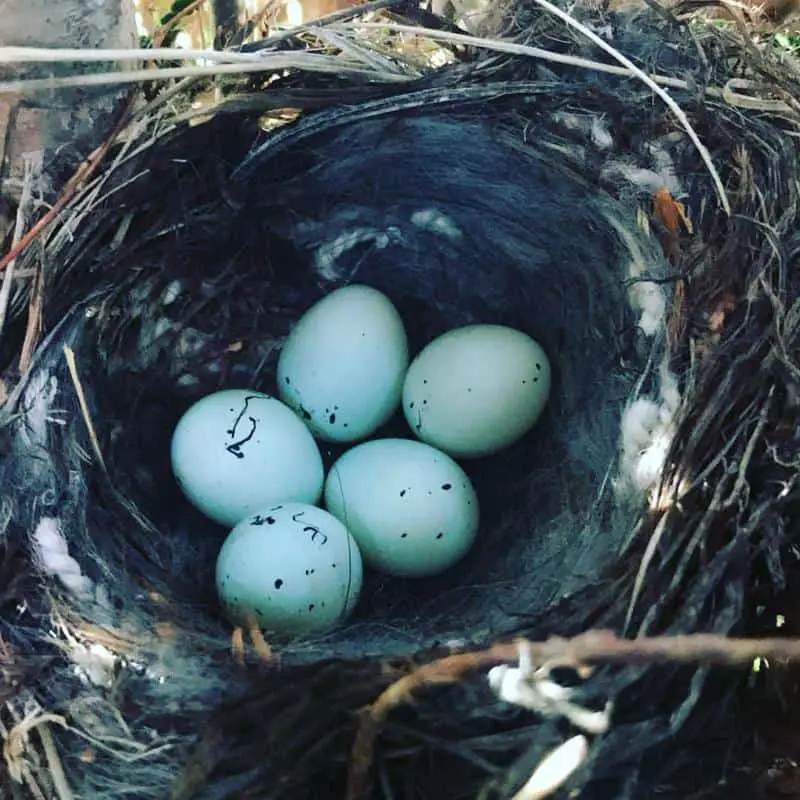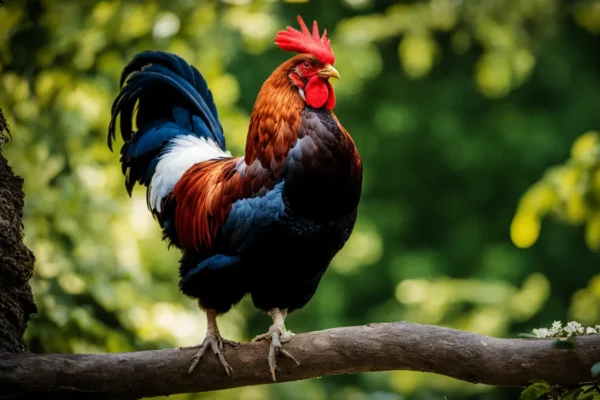You’re not alone if, while trekking, you’ve ever stumbled upon animal remains and pondered what happened. Because they aid in the breakdown of corpses, scavenger birds that consume dead animals are beneficial to the natural world. We’ll look at which birds consume dead animals and why in this post.
For those with limited time, the following is a brief response to your inquiry: The primary birds that consume dead animals are vultures, condors, and some eagles and hawks. Their powerful stomach acid makes it safe for them to eat decaying flesh.
Condors and Vultures
Vultures and condors are the two main species that spring to mind when one thinks about birds that consume dead animals. By effectively getting rid of corpses and stopping the spread of illness, these magnificent birds serve as nature’s cleanup crew and are essential to the ecology.
Turkey Vultures
One of the most prevalent and extensive vulture species in North America is the turkey vulture. They are readily recognized by their black plumage and their characteristic red, featherless heads. Their keen sense of smell enables them to identify the stench of rotting meat from a great distance.
Turkey vultures mostly eat carrion, tearing into corpses with their powerful beaks to get to the flesh. Though their food may not be the most enticing, they play a vital function in preserving the natural equilibrium.
Black vulture
Another species that is often seen in the Americas is the black vulture. When it comes to eating habits, they vary somewhat from turkey vultures. Like their cousins, they scavenge for carrion, but they are also known to be more opportunistic and to sometimes feed on living animals.
They are quite versatile and may be found in a range of environments, including cities and woodlands. Their presence aids in halting the spread of illnesses that decaying corpses may cause.
The King Vultures
The king vulture is among the most visually stunning vulture species. It is distinguished from other vultures by its vivid and colorful plumage, which includes tones of orange, blue, and yellow. The main distribution regions for king vultures are South and Central America.
It is well known that they eat a variety of foods, such as fruits, insects, and carrion. They are an interesting animal to examine because of their distinctive look and eating habits.
California condor
The California condor, one of the world’s biggest flying birds, is a critically endangered species. These amazing birds are mostly found in Baja California, Mexico, and the western regions of the United States.
Similar to vultures, their primary diet consists of carrion, and they use their enormous wingspan to fly far into the sky in pursuit of prey. These birds eat the corpses of land animals like cattle and deer, as well as marine mammals like seals and whales. Their population dropped to dangerously low levels due to habitat degradation and other issues, but conservation initiatives have helped to stabilize their numbers.
Eagles
Bald eagles are renowned for their strong hunting abilities and magnificent beauty. These raptors are well-known for their remarkable fish-catching prowess, but they are also adept scavengers. Bald eagles are not choosy eaters when it comes to dead animals.
They will eat corpses of all shapes and sizes, including smaller animals like rodents or birds and mammals like deer or rabbits. They may survive throughout the winter months when their regular food supplies may be restricted or when fresh prey is in short supply thanks to their scavenging activity.
Golden eagles
Like their bald brethren, golden eagles are opportunistic feeders. Though their primary mode of hunting is live prey, they sometimes engage in scavenging as well. It has been seen that golden eagles consume carrion, which includes dead deer, rabbits, and even other birds.
They are effective hunters due to their sharp vision and strong talons, but they also have no problem chowing down on food that nature has already provided for them when the chance presents itself.
Although they do eat dead animals, eagles do not primarily get their nourishment from this source. Being expert hunters, their main source of food is live prey. Nonetheless, their adaptability and ability to use carrion and other food sources speak to their adaptability and survival instincts.
Other Avian Species Known to Pry
A number of other bird species are also known to scavenge dead animals, in addition to vultures. Because of a special adaption that enables them to live only on carrion, these birds are vital to the environment because they assist in cleaning up corpses and stopping the spread of disease.
Ravens
Ravens are very adaptive birds that have been seen scavenging on dead animals. They are often linked to mystery and intellect. They can detect carrion far away because of their strong beaks and acute vision.
It is well known that ravens establish social groups and collaborate to get and devour a cadaver.
Crows
Known for their cunning and intelligence, crows are scavengers that seize opportunities. They have been seen consuming a wide range of deceased creatures, including small mammals and roadkill. It has also been observed that crows hoard food items for later consumption.
They are able to live in times of shortage because of this tendency.
Magpies
Magpies are another kind of bird that scavenges on carrion. They have distinctive black and white plumage. They have been known to steal jewelry and other tiny goods, and they are especially drawn to sparkling stuff.
Only a few animals share the extremely clever bird known as the magpie’s ability to identify itself in a mirror.
Gulls
Seagulls are opportunistic eaters that may easily scavenge on dead animals. They are often seen along coasts and bodies of water. They can travel great distances in pursuit of food thanks to their easy flight.
Around landfills and trash dumps, seagulls are often seen flocking together to hunt for leftover food and carrion.
Hawks
Although most people associate hawks with being expert hunters, certain species have been seen scavenging on carrion. The red-tailed hawk is one of the bigger hawk species that exhibit this behavior more often. Hawks are able to rip into corpses and consume the leftovers because of their strong talons and keen beaks.
These birds play a significant role in nature’s cleaning team, together with vultures. Their capacity to eat deceased animals contributes to the stability of ecosystems and stops the spread of illness. Thus, keep in mind that hawks, ravens, crows, magpies, seagulls, and other birds of prey are all contributing to the delicate balance of nature.
Why Rodents Consume Dead Animals
Birds are recognized for eating a wide variety of foods, from insects and small animals to seeds and berries. On the other hand, certain birds have come to like carrion, or dead animals. Although it may not appear comfortable to humans, birds do this for a number of reasons.
Food Source
The fact that dead animals provide birds a good supply of food is one of the main reasons they consume them. Carrion may be a plentiful and convenient food source, particularly in areas where there may not be as much prey.
Birds may get nutrients and energy by scavenging on corpses that they would not be able to get from other sources.
The Turkey Vulture, for instance, is renowned for its long range carrion detection skills. It can identify the smell of decomposition because to its excellent sense of smell, which helps it locate possible food.
Since these birds eat dead animals that may otherwise go to waste, they are vital to the cleanup of the environment.
Potent Gastric Acid
Birds’ very acidic stomachs are another factor that allows them to eat dead animals. Birds’ digestive tracts are designed to process a variety of meals, including meat. Because of the lower pH in their stomachs, birds are better able to digest and break down animal proteins.
The stomach acid of some birds, including vultures, may have a pH as low as 1, which is similar to the acid in an automobile battery! This acidity helps break down any potentially dangerous microorganisms in the carrion in addition to facilitating digestion.
Therefore, the risk of birds becoming ill from eating rotting meat is reduced.
Maintains the Cleanliness of the Ecosystem
Birds that consume dead animals engage in scavenging behavior, which is essential to the upkeep of a healthy environment. These birds aid in stopping the spread of illness and the buildup of decaying flesh by eating corpses.
By eliminating potentially dangerous germs and lowering the risk of disease transmission, they serve as nature’s cleaning team.
Furthermore, the presence of scavenger birds has the potential to draw in other species. For instance, when vultures congregate over a cadaver, it may set off a feeding frenzy that draws in crows and ravens, among other scavengers.
This facilitates a more effective carcass degradation in addition to being a food source for other animals.
Fascinating Details Regarding Scavenger Birds
Projectile vomit is a Defense Mechanism for Vultures
Vultures have an intriguing maneuver up their feathers in terms of defensive systems. As a defensive measure against any dangers, these amazing scavenging birds can shoot projectile vomit.
They may swiftly reduce their weight thanks to this unusual habit, which facilitates flying and helps them flee from danger. Predators are also deterred by it because of the putrid-smelling vomit.
Thus, the next time you see a vulture, keep in mind not to approach too closely or you might be in for a nasty surprise!
Turkey Vultures Possess an Excellent Odor Sense
The acute sense of smell possessed by turkey vultures is one of their most intriguing characteristics. The majority of birds use their eyes to find food, but turkey vultures have developed an amazing sense of smell.
They are excellent scavengers because they can smell decomposing meat at a considerable distance. Their sense of smell is so strong that they may even find carrion buried underground or concealed under a thick layer of vegetation.
They are distinguished from other scavenging birds by this amazing skill, which also helps them locate food sources that they may otherwise miss.
The Survival of California Condors Is Critical
The gorgeous North American scavenging bird known as the California condor is today facing a serious danger to its existence. There are just a few hundred of these exquisite birds left in the wild, making them highly endangered.
Numerous reasons, including habitat degradation, accidents with electricity lines, and lead poisoning from swallowing gunshot pieces, are to blame for the population drop. Numerous conservation initiatives are being carried out to preserve and improve their habitats, reduce lead exposure, and support captive breeding operations in an attempt to boost their population.
To guarantee the survival of this renowned scavenging bird species, we must continue to support these conservation measures.
Final Thoughts
Due to their ability to clean up corpses and stop the spread of illness, scavenger birds that consume dead animals are essential to the ecology. Although the most well-known scavengers are condors and vultures, several other birds will also opportunistically eat on carrion.
Gaining knowledge about these intriguing animals increases our respect of the natural order.






